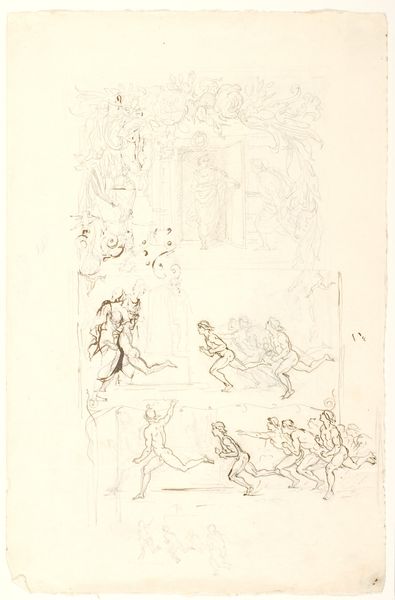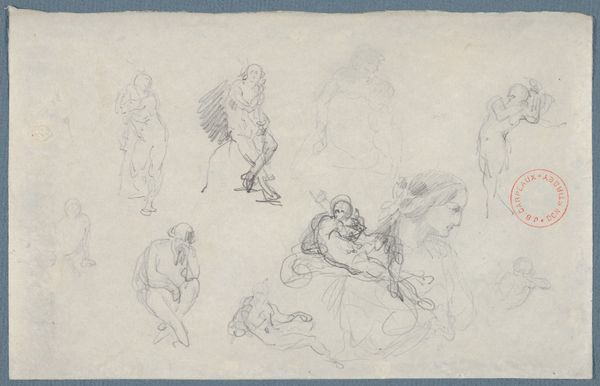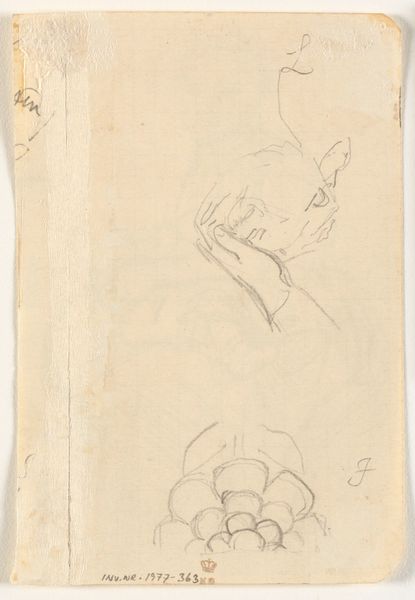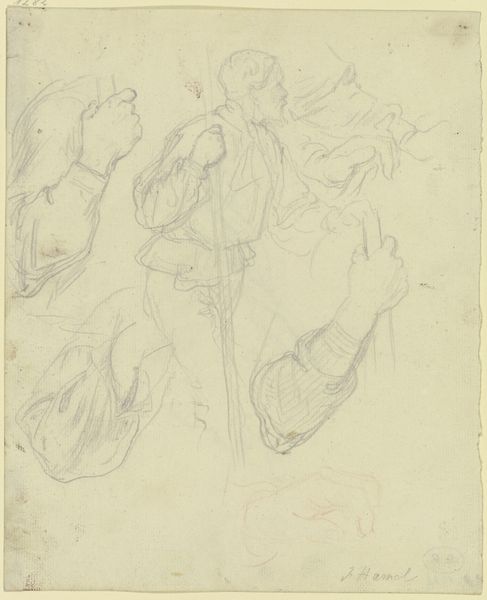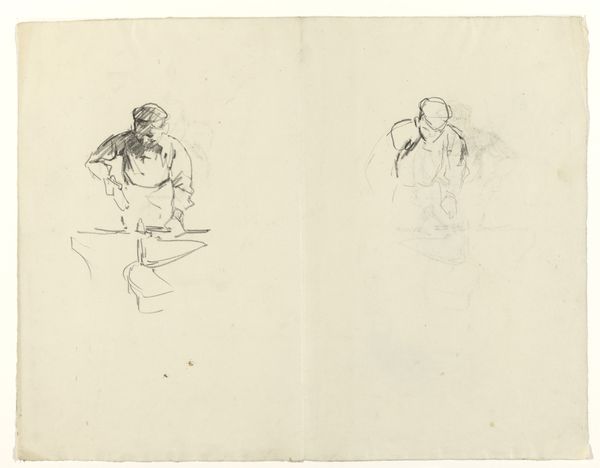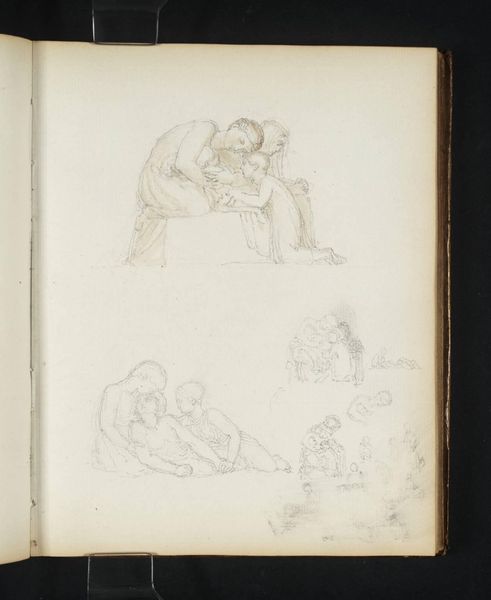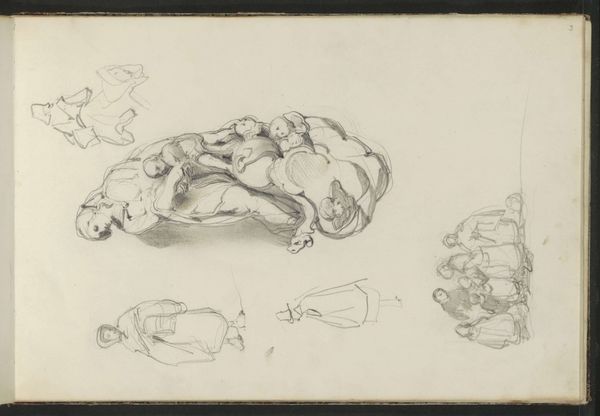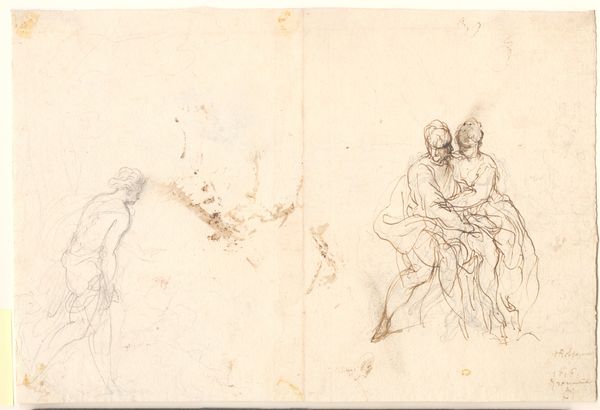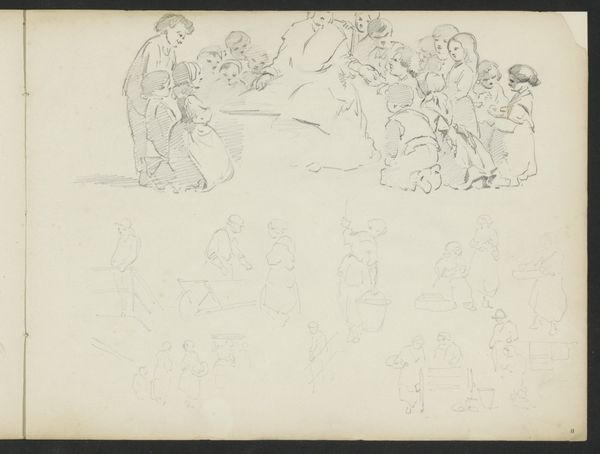
Dimensions: 304 mm (height) x 238 mm (width) (bladmaal)
Curator: This is Lorenz Frølich’s "Nymphs Discovering the Sleeping Eros," created in 1860. It’s rendered in ink and pencil. What are your initial thoughts? Editor: It has a quiet, almost melancholic air about it. The lines are so delicate, giving it a very ethereal feel, and almost feels as though these forms could dissipate at any moment. I think what catches my attention the most is the artist's mark making and his process. Curator: Agreed. Looking at the circumstances surrounding this piece, the resurgence of interest in classical themes played a huge role, in part facilitated by the proliferation of illustrated books at that time, giving a much wider audience exposure to history-based or mythological subject matter like this one. Editor: And thinking about its materiality, this isn't just about classical subject matter but the deliberate deployment of drawing – preliminary and reproductive – as its own form, especially with the Romantic era emphasis on feeling. The thinness of the lines and monochrome quality really underscore its fragile sentimentality. Curator: It’s fascinating to consider its place within academic tradition. History painting, though still valued, was becoming subject to increased critical inquiry, and these works allowed for experimentation with form in an academic context without carrying the weight of monumental canvases, potentially broadening audience appreciation beyond solely history. Editor: Absolutely, and if we consider Frølich’s position in that socio-political milieu, what can we determine about how those cultural pressures affected the art being created, how these romantic sensibilities became another export for expanding audiences in illustrated print media, and further influencing our own ideas and feelings about it. Curator: Indeed, a lot to think about there in terms of public consumption. Any final thoughts as we wrap up? Editor: It is in thinking through that network of exchange, both literal and figurative, that makes us understand how to examine Frølich’s ink drawing, not just as an illustration or depiction of a narrative moment from a myth, but how the act of making became part of the point of this delicate expression. Curator: Yes, seeing how classical themes continued to adapt and resonate—and how Frølich uses his materials—definitely enhances its relevance today.
Comments
No comments
Be the first to comment and join the conversation on the ultimate creative platform.


